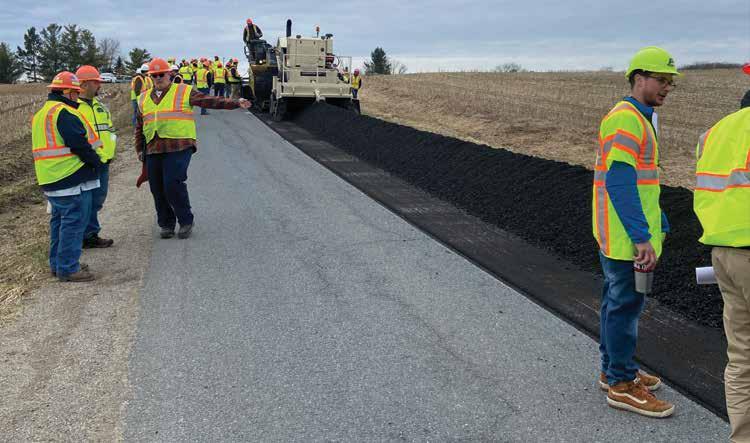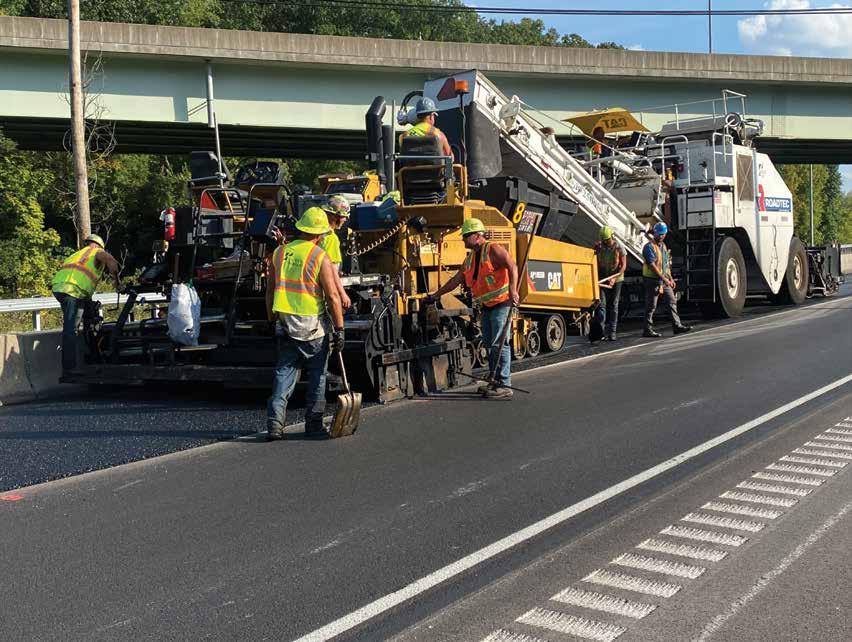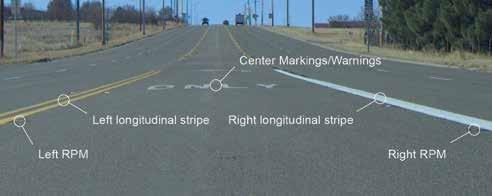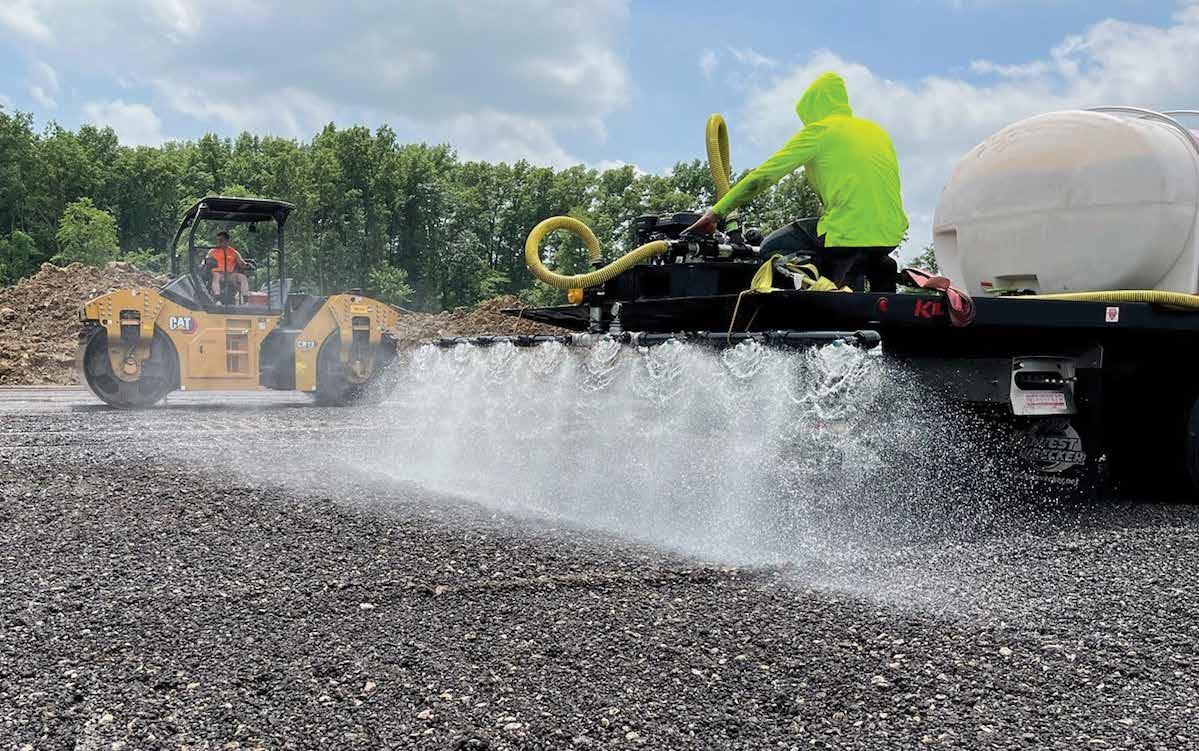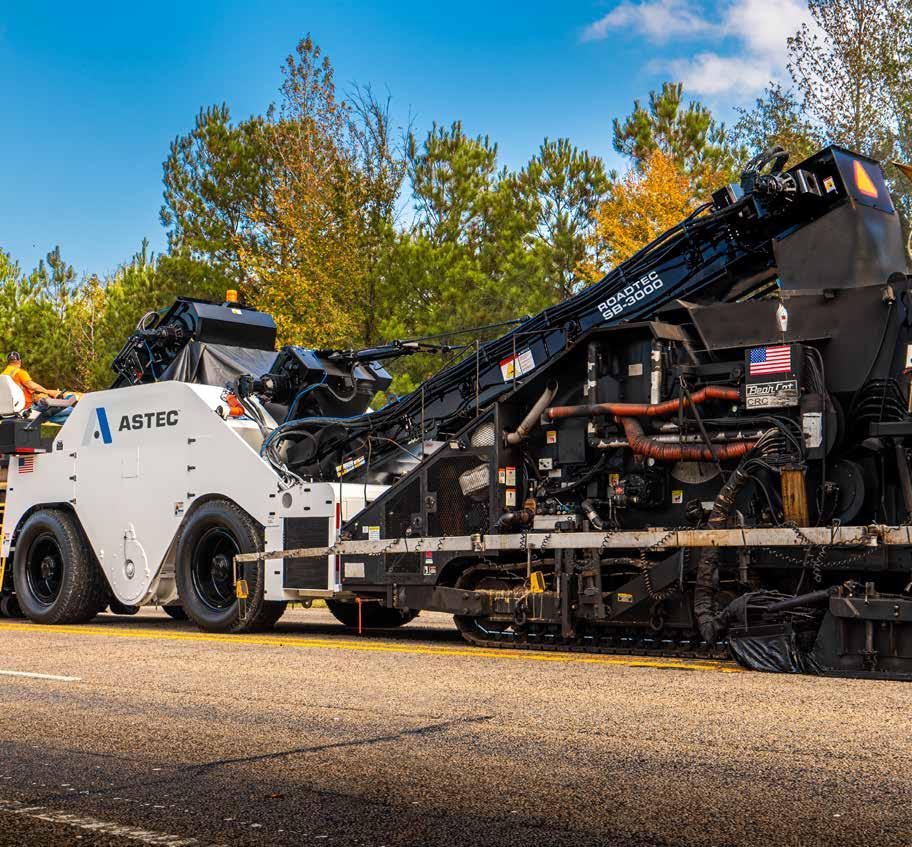
8 minute read
Rebuild & Reman for Savings Sustainability, Supply Chain
BY SARAH REDOHL
The concept of rebuilding machinery, or remanufacturing parts, is nothing new. However, the supply chain crisis contractors are facing across the country has increased interest in making the most out of a contractor’s existing fleet for as long as possible. Pair that with the ever-expanding offerings from original equipment manufacturers (OEMs) and growing interest in operating more sustainably, and this may be a perfect time to weigh the benefits of a rebuild.
1. OVERCOME (SOME) SUPPLY CHAIN ISSUES
CNH Industrial Reman, Springfield, Missouri, has been remanufacturing parts since 2009 and offers more than 3,000 part numbers. Chandler Dalenberg, CNH Industrial Reman dealer development manager, has seen interest in remanufactured parts grow as the United States continues to face supply chain challenges, as new parts are less easily available, and as there is higher used machine utilization in the market. “The supply chain crisis has had a significant impact on our ability to leverage our remanufactured product lines to fulfill our customers’ needs.”
This is also true of certified rebuilt machinery, said Jared Haughton, certified used sales manager in North America for Volvo Construction Equipment, Shippensburg, Pennsylvania. “It’s becoming increasingly difficult to get new equipment, so a certified machine might be as close to new as you can get.”
Simultaneously, there are also fewer certified rebuilt machines available. Under normal circumstances, Haughton said around half of all Volvo CE rebuilds have historically been articulated trucks (with the other half mostly composed of excavators and wheel loaders), but that’s dropped to around 30% in the past couple years.
“As a result of the supply chain shortages, the demand for new trucks has outpaced the supply in North America,” he said. Volvo CE’s certified rebuild program is primarily fed by its lease portfolio in North America, and its lease customers are now extending their leases as they wait for new trucks to become available, “which prevents them from entering our certified rebuild program.”
“We haven’t seen the same level of supply chain issues as new equipment, but parts availability is an ongoing issue and probably will be for the foreseeable future,” Haughton said, adding that certified rebuilds are currently delayed by around two weeks from their usual 30-day turnaround. “It’s not so much parts availability, but shipping challenges to get parts in from Sweden, China, South Korea, South America.”
Haughton said he expects the backlog for certified rebuilds to continue for a while after the market normalizes, as contractors can once more get their hands on new equipment and send leased equipment back in for certified rebuilds.
For those interested in buying certified rebuilt equipment, he recommends ordering well in advance. “Our certified rebuilds are normally available for sale after they’ve been certified, but customers are placing orders to secure them 60 days ahead of them becoming available.”
Jared Haughton said around half of all Volvo CE rebuilds have historically been articulated trucks (with the other half mostly composed of excavators and wheel loaders), but that’s dropped to around 30% in the past couple years.
Jaco Nolte, services development manager at Caterpillar, Peoria, Illinois, also expressed the importance of planning ahead in the current climate. “When planning a rebuild, it is critical to work with the Cat dealer to schedule the rebuild and execute a plan to ensure the parts will be available at the time of the rebuild to ensure the machine can be returned to work as quickly as possible,” he added.
2. COST SAVINGS
“Every customer is looking to lower their total cost of ownership,” said Tara Stryker, head of used equipment for Volvo CE in North America. “Certified used machines give them the reliability of a new machine at a lower acquisition cost, which will reduce the total cost of ownership over the lifetime of that asset.”
Nolte said the machines in Cat’s certified rebuild program are designed for multiple lives. “If customers took care of their machines through good maintenance and operating practices, they would lose out on economic value left in that machine if they don’t rebuild,” he said, adding that certified dealer technicians can evaluate which parts of the machine can be reused according to Caterpillar reuse and salvage guidelines, leading to cost benefits versus buying new. Caterpillar also uses remanufactured components in its certified rebuilds when possible, which also lowers the total rebuild cost.
Dalenberg at CNH said its remanufactured parts are priced at a fraction of the cost of new parts (roughly 25 to 30% less).

3. SUSTAINABILITY
Nolte said customers may favor rebuilding over buying a new machine for sustainability reasons, as well. “The Cat certified rebuild program has been practicing sustainability since it was launched in 1985,” he said. “[Caterpillar’s] rebuild guidelines for reuse or salvage criteria encourages reusability of parts on a machine and/or component without sacrificing reliability or durability and provide a complete second life for the customer.”
During the Caterpillar Executive Sustainability Forum Sept. 15, Jason L. Conklin, vice president of global construction & infrastructure, said, “Cat machines are built to be rebuilt” as part of a core sustainability strategy for the company. In 2021, the Cat certified rebuild program kept “127 million pounds from going to the landfill,” Conklin said.
This strategy of reusing existing iron lets customers leverage today’s technology updates. The Cat team members participating in the Forum that day made it clear how smart it is to drop new-and-improved tech into well-maintained iron to keep an existing fleet agile.
According to Jamie Collins, director of sales and marketing, CNH Industrial Reman was also able to keep 8.4 million pounds of raw materials out of landfills through core parts and remanufacturing components back to OEM specifications in 2021.
4. FLEET MANAGEMENT
Nolte said rebuilding an existing machine versus buying new can also offer some benefits in terms of fleet management and maintenance. “The customers’ operators and technicians may be very familiar with that machine or they may own a fleet of them, which would make sense to return [that asset] to original performance and productivity levels,” he said. “This could even simplify parts stocking for the customer.”
When the first Cat certified rebuild was performed in 1985, the program only covered one machine and one product offering - a complete machine rebuild. Today, the Cat certified program covers over 1,000 machine serial number prefixes and has rebuild offerings from full machine rebuilds to certified machine component rebuilds.
5. UPGRADE AND RETROFIT
Another benefit of the rebuild process, Nolte said, is that customers can choose upgrades and retrofits available for their machine to enhance its features or capabilities. This might include ergonomic improvements; safety, visibility and security enhancements; emissions and performance upgrades; or telematics, to name only a few. For example, LED work lights, Cat Work Area Vision System (WAVS), Cat Stand Alone Tire Monitoring System, Product Link Elite and Pro Series Cellular and Satellite Kits (PL631, PL641 and Elite Upgrade).
6. IMPROVE NEXT-GEN EQUIPMENT
For Volvo CE, upgrades and enhancements might include ActiveCare Direct, Haul Assist for articulated trucks, or Load Assist for loaders. However, Stryker added, another benefit of OEM rebuilds is that the process helps Volvo CE develop a better product in the long-run. “We learn so much more about our machines when we get them back to rebuild them,” she said. “The longer the OEM stays engaged with its machines throughout their life cycles, that helps us make better design and production decisions.”
In June, Volvo CE opened its fifth certified rebuild center, in Shippensburg, Pennsylvania. “Our customers see we aren’t just investing in new machines, but also in our used machines,” Stryker said, adding that Volvo CE eventually plans to remanufacture components as well.
7. UPGRADE PARTS WHILE INCREASING WARRANTIES
According to Collins, not only are remanufactured parts “virtually indistinguishable from new parts,” but CNH is also able to better understand failure modes of parts and correct them. “This gives end-customers the opportunity to upgrade parts at a lower cost while reducing their liability with an increased warranty.” CNH offers a 24-month warranty on remanufactured parts.
Dalenberg said a significant piece of the growing popularity of remanufactured parts is educating dealers and customers about the process. To do so, CNH has a field sales team that handles various training opportunities at its plant and dealership locations across North America. CNH also established a Reman Technical Center that answers 30,000 calls annually from its dealership network. “These combined resources have led to great strides in the perception of quality around our parts,” Dalenberg said.
8. IMPROVED BUYING EXPERIENCE
In the past couple of years, Volvo CE has also made some changes to the way it sells its certified rebuilt equipment. For example, it overhauled its inspection process to make it easier for customers to inspect the equipment they’re interested in buying.
They also have a 360-degree walkaround video of each machine like you see on car dealerships’ websites, “so it really feels like you’re there,” Stryker said. “Some of our customers still want to come see the equipment they’re buying, but with our 360-degree walkaround videos, many are buying used equipment sight unseen. I think that would have happened eventually, but the COVID-19 pandemic definitely accelerated that trend.”
“There are a lot of old wives tales, like you have to go see a machine before you buy it or if you paint something you’re hiding something,” Stryker said, but added that Volvo CE is striving to change those conceptions. For example, although painting certified rebuilt machines remains optional, Haughton said Volvo CE has aimed to increase transparency by providing before and after photos and explaining what’s been painted and why. “Having transparency about the equipment’s history and the OEM standing behind the condition of the machine makes a big difference.”



